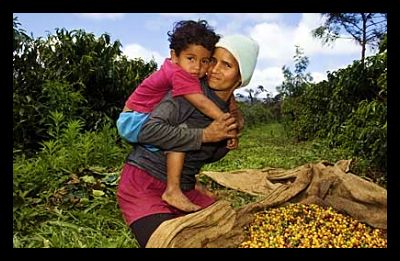Brazil’s Agricultural Development Success

The greatest challenge of a generation remains as the world figures out in the decades ahead how to feed an additional two billion people. Unprecedented population growth, rising incomes in the developing world and a growing need for energy contribute to the increase in demand for agricultural products. Agricultural development is needed now more than ever to meet this demand, but if Brazil‘s success in recent decades is any indicator, development can be improved worldwide to address global poverty.
Agricultural Development or Perpetuated Hunger?
Depending on the actions of the international community, this increase in demand will lead the world down one of two paths. If agricultural production is not increased, millions of people will increasingly be left in a state of perpetual hunger. On the other hand, the increase in demand for agricultural products can be seen as an opportunity for economic development through new food markets in the developing world.
While there is a certain amount of truth to the argument that the global food security problem stems from distribution rather than production, there is also strong evidence that an increase in production is possible — and necessary. Economists predict that as incomes and population rise, the global demand for food will increase 60 percent by 2050. This means that the world will need to produce as much food in the next 40 years as they did in the last thousand.
If done properly, agricultural development can be a driving force for economic development and poverty reduction. Research conducted by the Chicago Council on Global Affairs suggests that global food security is particularly advanced with increases of the agricultural potential of smallholder farmers in Sub-Saharan Africa and South Asia. The benefits are two-fold: the increase in agricultural income for smallholder farmers can lift millions out of chronic hunger, and the increase in production can provide more food to the global market as a whole.
How can a country best facilitate agricultural development? The simple answer is through investment research and training in science-based agriculture. The success story of Brazil best illustrates this methodology.
Brazil’s Success Story
Through investments in agricultural research, Brazil has moved from a net importer of food to one of the world’s largest breadbaskets. Between 1996 and 2006, the total value of Brazil’s crops rose by 365%. The tropical country has now caught up with the “big five” grain exporters (America, Canada, Australia, Argentina and the European Union) – all of which are temperate producers.
This astounding progress has been made through the successes of the Brazilian Agricultural Research Corporation – Embrapa for short. Since its founding in 1973, Brazil has doubled its cultivated land and multiplied its agricultural output by six. Antonio Lopes, the president of Embrapa, says that the success lies in the delicate balance between agricultural expansion and land conservation.
Because no model for successful agricultural development in a tropical climate existed previously, Brazil was forced to create its own. First, they increased the amount of ploughable land by adding lime and nitrogen-fixing bacteria to soil that was previously unfit for farming. Second, they introduced a larger-leafed variety of grass and converted part of the new land into pastures so as to allow for the expansion of Brazil’s beef herd. Third, and perhaps most importantly, they converted temperate-climate soybeans into a tropical crop through genetic modification. Last, Embrapa encouraged and integrated new operation farm techniques such as “no-till” agriculture and forest, agriculture and livestock integration.
According to Lopes, Brazil will continue to invest in agriculture research and development for the foreseeable future. Brazil should serve as an example to the rest of the world for the ways in which private and public investment can transform a developing country in the tropics into an agricultural powerhouse.
– Kathryn Cassibry
Source: InterAction, The Economist
Photo: Guardian
